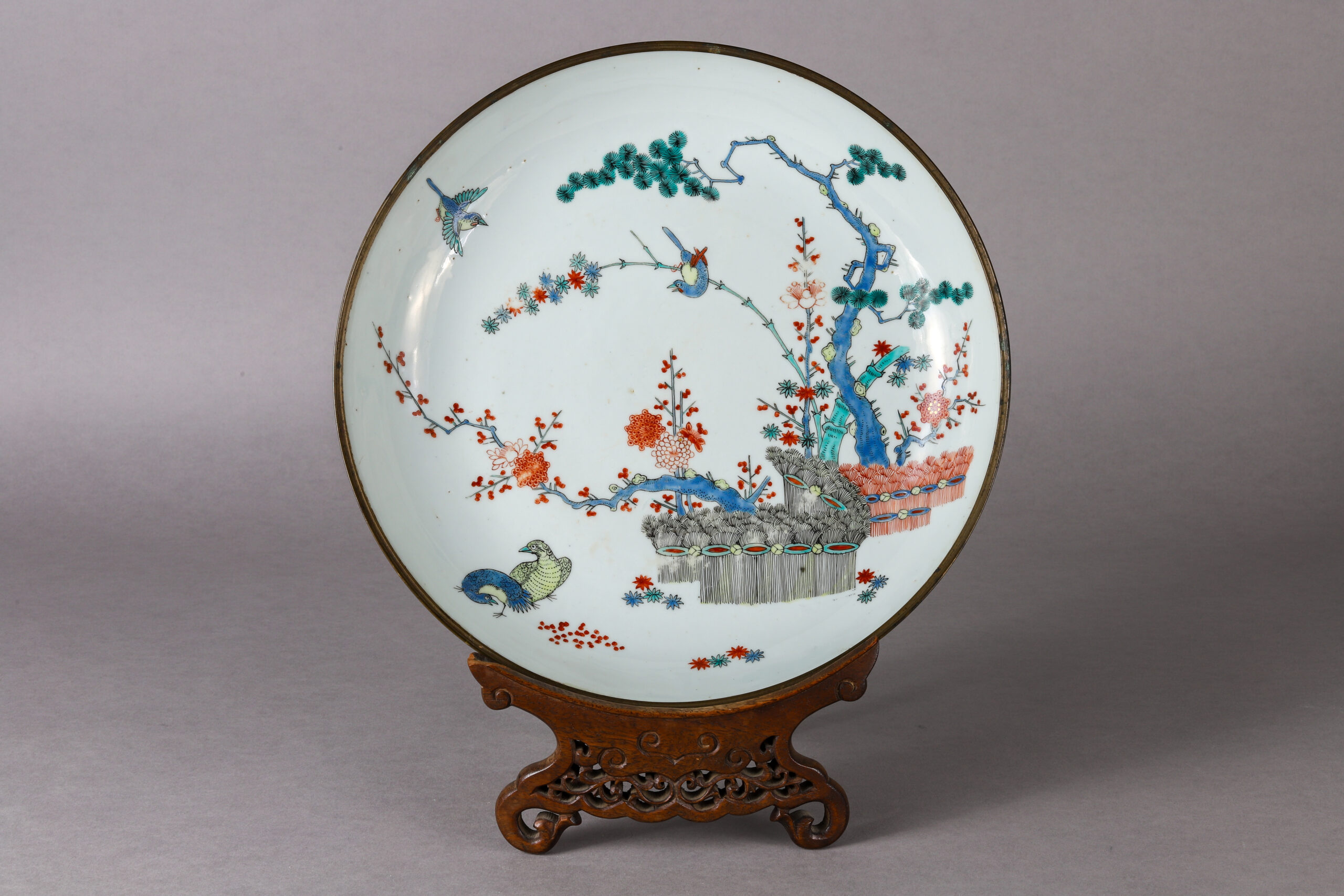This attractive plate has been well executed with a very refined painting in Kakiemon-style with bird-and-flower.
The plate is Chinese, and the decoration has probably been done in Holland.
A brass ring is mounted on the rim.
We see this a lot on pieces made for the Vietnamese market.
The grouping of a pair of magpies, plum blossoms, and bamboo is a traditional Chinese image, which forms the rebus ”the couple delights in double happiness (zhumei shuangxi).
Also, we see the three friends of winter.
A pine tree, in combination with bamboo and plum blossom. All three plants have the natural ability to withstand, or even flourish, in harsh environments. This particular trio of plants is a welcome sight in the cold early days of Spring, when the evergreen bamboo and pine are joined by the first blossoming plum trees.
Their surprising display of vitality represents hardiness, bravery, integrity, and rebirth – qualities much admired by the Confucians. All three plants symbolize longevity because the pine and bamboo are evergreen, and the plum lives long. Representations of these hardy winter survivors were intended to encourage you to persevere, even in the face of adversity. This combination also came to symbolize fortitude and uprightness in trying conditions, traits with which a Chinese scholar wanted to aspire. The three plants can also represent China’s central beliefs – Confucianism, Daoism, and Buddhism. It is written that a Chinese gentleman was said to be a Confucian in his career, a Daoist when he returned, and a Buddhist when death was imminent.
The plate is 28,5 cm in diameter.
And in a good condition.
2250,- euro.
Below is a similar plate in The Metropolitan Museum Of Art.











